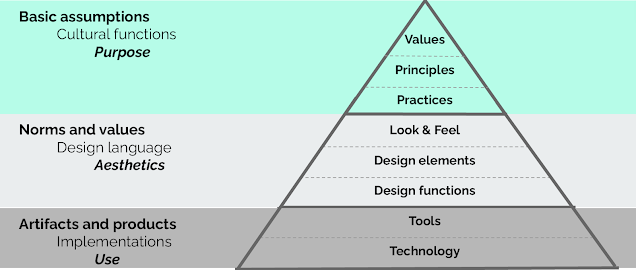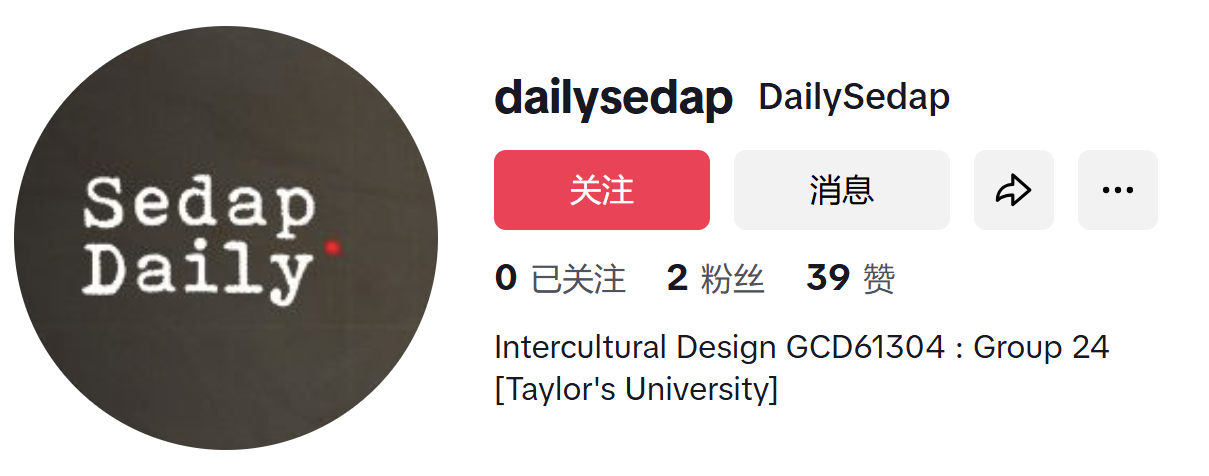Intercultural Design/GCD61304
Intercultural Design
GCD61304
1/2/2025--21/3/2025 (W1-W7)
LIU CHENG RUI (0370930)
GCD61304/Intercultural Design/ Bachelor of Design (Hons) in Creative Media / Taylor's University
TABLE OF CONTENTS
-Lectures
-Instructions
-Task 1
-Task 2
-Task 3
-Feedback
-Reflections
-Resources
Lectures
Visuals are powerful persuasive medium to provide most of our information about the world.
1.Everything that can be seen.
2.Everything produced or created by humans that can be seen.
Fig1.1 Visuals example
Tattoos
Sailor Tattoos
From the sailor's hands to his feet, the symbols tell the stories of
journeys made along the open water.
Japanese Tattoos
Traditionally, Japanese tattoos began as a means of conveying societal
status, as spiritual symbols, as a sort of charm for protection as
well as symbolizing devotion, not unlike modern religious tattoos.
Design Significance and the Design System
Fig1.4 Design significance
Fig1.5 Design System example
Fig1.6 Design System example
Cultural Sensitivity Awareness
1.Symbolism and Imagery:
Certain symbols and images may carry different meanings in different
cultures. Designers should be mindful of potential cultural
interpretations to avoid unintentional misunderstandings or offense.
2.Typography and Language:
Choosing fonts and text styles that are culturally appropriate is
important. Additionally, considering language variations and ensuring
accurate translations is crucial for reaching diverse audiences.
3.Color Considerations:
Colors can have cultural significance, and their meanings may vary
across different societies. Understanding the cultural associations of
colors can help designers make appropriate choices.
Addressing Cultural Sensitivity
1.Inclusive Design:
Designers should strive to create products and experiences that
are
accessible and inclusive for people from various cultural
backgrounds, including those with different abilities and
needs.
2.Localization:
Adapting designs to specific cultural contexts through
localization can enhance the relevance and acceptance of a
product or service.
3.User Research:
Conducting thorough user research, including ethnographic
studies and user testing across diverse groups, helps designers
gain insights into cultural preferences and behaviors.
4.Cultural Awareness Training:
Design teams may benefit from cultural awareness training to
develop a deeper understanding of diverse perspectives and
sensitivities.
Instructions
Task 1 Proposal
Requirements
The general theme is “Everyday Design”
- Everyday design refers to the observation and analysis of
design elements that are seamlessly integrated into daily life. These
designs may not be iconic or extravagant but play a crucial role in
shaping the cultural and functional aspects of society. For your
project, students can explore how design influences and reflects
Japanese culture, behaviour, and identity through commonly encountered
objects, environments, and systems.
- Produce some preliminary ideas on how to visually express your
interpretation using design language. Each idea is to be supported by a
short rationale. Conduct visual research to help expand your idea
generation.
process
week1
In the first week of the course, we met Mr.Mohd, the teacher in charge
of our module, introduced us to other lecturers, and then told us some
task requirements and basic information about this module.
The most important thing is that Mr.Mohd explained to us the main
content and requirements of task1. Our Design theme is "Everyday Design", but we are not limited to Japanese culture, the cultural choice can
be any country.
Courseware for the first lesson
week2
In the first week, we already had our own group, so in the second week,
we discussed the design topic online. At first, we wanted to study
Korean culture, but due to various factors, we changed our thinking and
turned to study Malaysian culture.
Our group's first thought was to make a deck of cards about Malaysian
traditional culture.
But other groups had already chosen the theme, so we had to come up with
new ideas, which included making an electronic bus pass with Malaysian
cultural features and a cup holder for drinks.
So we designed a lot of sketches about the cup clips.
week3
In the third week, we had a discussion with our lecturer, Mr.Charles.
Mr.Charles thought that our idea had already had a concrete
object, so there was not much to design and it was a little boring, so
he suggested that we turn our attention to other places. Therefore, we
thought that the initial design of the cup clamp was designed for the
influence of Malaysian food culture, so we finally chose to study
Malaysian food culture.
Presentation slide
1.Research content
Mainly based on several representative Malaysian food characteristics.
After discussion and communication, we choose Mamak and other Malaysian
food culture as the research direction. In order to have a deeper
understanding of this topic, we also define specific research questions
and research objectives, such as the origin of Malaysian food culture
and the hope that more people in the world will know and love this
culture through this research.
2.Describe the research content
Malaysia's food culture combines diverse Malay, Chinese, Indian and
Middle Eastern influences to form a unique culinary tradition. Its
development stems from historical trade exchanges and immigrant
integration, resulting in specialties such as Nyonya cuisine and
Malaysian Indian cuisine.
The main carriers of catering culture include:
Mamak (Indian Muslim Restaurant) - Open 24 hours, it is a symbol of
social and night market culture.
Hawker Centre - a collection of stalls to showcase a variety of
cuisines.
Kopitiam (Traditional Chinese coffee shop) - a social space with classic
breakfast and snacks.
Warung (Malay Food stall) - offering traditional Malay food, carrying
village food culture.
Food culture not only affects daily life, but also promotes ethnic
exchange and social cohesion. In terms of festivals, the traditional
festivals of different ethnic groups revolve around special food, such
as Rendang for Eid al-Fitr, Lo sang for Chinese New Year, and banana
leaf rice for Deepavali.
presentation video
TASK2 Field Study(Data collection)
week4
Today was not a class day, so we went to the Tschang Street and Sunway
areas to collect data on food culture, such as Hawker center, Mamak,
Warung and Kopitiam.
Fig4.1 Photo of Tschang Street
Fig4.2 Photo of Tschang Street
Fig4.3 Photo of Kopitiam
This Sunday is the deadline for Task 2. After class on Friday, we asked Mr. Charles about Task 2. Mr. Charles asked us about our observations and confirmed our data. Besides, Mr. Charles also asked us about specific matters such as the culture of each restaurant, the attitude of the waiters, the differences in the customer base, etc. After listening to Mr. Charles' suggestions, we changed the PowerPoint content and recorded the demo video.
Data collection slide
Demo video
TASK3Final Project
week6
There are no offline classes in Week 6 as we prepare for the final
project.
week7
Our final project required making a video and uploading it to
TIKTOK.
I'm in charge of the audio and sound parts, and video production
requires a lot of different styles of audio and sound, but our videos
tend to be more realistic.
Here's the original audio I found, which I divided into four sections
based on location and scene.
After making the first version of the video, I re-adjusted some of the
audio because I needed more realistic audio to reflect the scene.
In addition, we have decided to change the user name and avatar on the Tiktok page to complement more content we will be Posting. We decided to choose "Daily Sedap" as our new username, "Sedap" translated in Malay as "delicious" in English.
In this way, our Tiktok page will become more in line with our research subject, and its recognition will be enhanced.
This is our final presentation slide
Final presentation slide
Final project recording
Final presentation slide link:
Final project recording link:
TikTok page link:
Final Project link:
Feedback
week3
In the third week, we had a discussion with our lecturer, Mr.Charles.
Mr.Charles thought that our idea had already had a concrete
object, so there was not much to design and it was a little boring, so
he suggested that we turn our attention to other places.
week5
Mr. Charles asked us about our observations and confirmed our data.
Besides, Mr. Charles also asked us about specific matters such as the
culture of each restaurant, the attitude of the waiters, the
differences in the customer base, etc.
Reflections
Findings
In researching the traditional Malaysian food culture, I discovered
that food is not only a part of daily life, but also an important
symbol of cultural identity. Whether in the Malay, Chinese or Indian
communities, each traditional food has a unique story, festival
customs and cultural significance behind it. In addition, I have
found that the colors, shapes, and presentation of many traditional
foods have connotations of auspice, respect, or gratitude, and these
visual elements provide rich inspiration for cross-cultural design.
Observations
I have observed both differences and blends between the traditional
diets of different ethnic groups in Malaysia. For example, the use
of spices in food and the way of decoration show their own cultural
characteristics, but on some festival occasions, different ethnic
groups will share food with each other, reflecting the tolerance and
harmony between cultures. I have also noticed that many traditional
foods are oversimplified or commercialized in modern design
applications, which has made me more aware of the need to balance
cultural authenticity with contemporary aesthetics in design.
Experiences
In this project, I have accumulated in-depth research experience,
including field interviews with vendors, participation in
traditional markets, photographing food details, and understanding
the stories behind food through interviews. I learned how to turn
research data into design inspiration, especially drawing on
traditional elements in color and pattern design. At the same time,
I also experienced the importance of teamwork, people from different
perspectives to help me constantly improve ideas. Most importantly,
I learned how to respect and present a culture in visual language,
rather than "using" it superficially.
Resources
Edited Videos Audio and Background Music
Kafei Dian
Chan Ooi Yee Kopitiam
Tang City Food Court
Rock Cafe
Warung outside of Taylor's
Blendik
Nasi Kandar Shaaz
Nasi Kandar Ali Bistro
Introduction
Additional Audio=

















Comments
Post a Comment